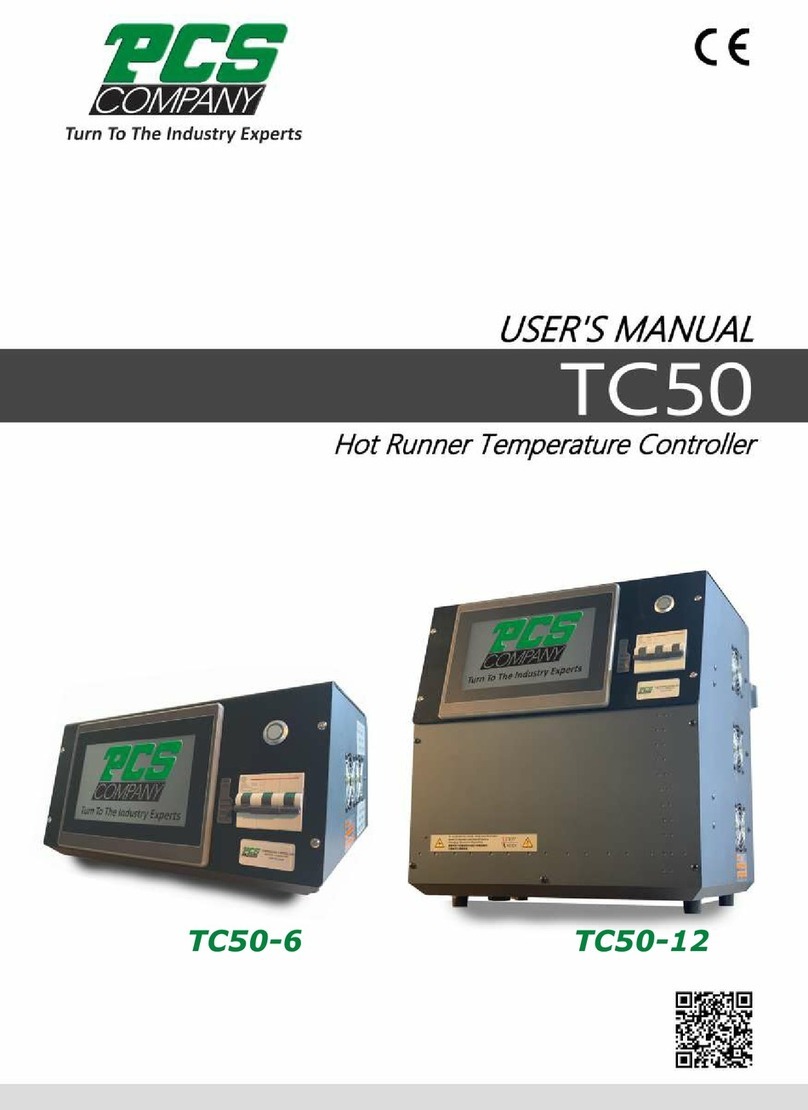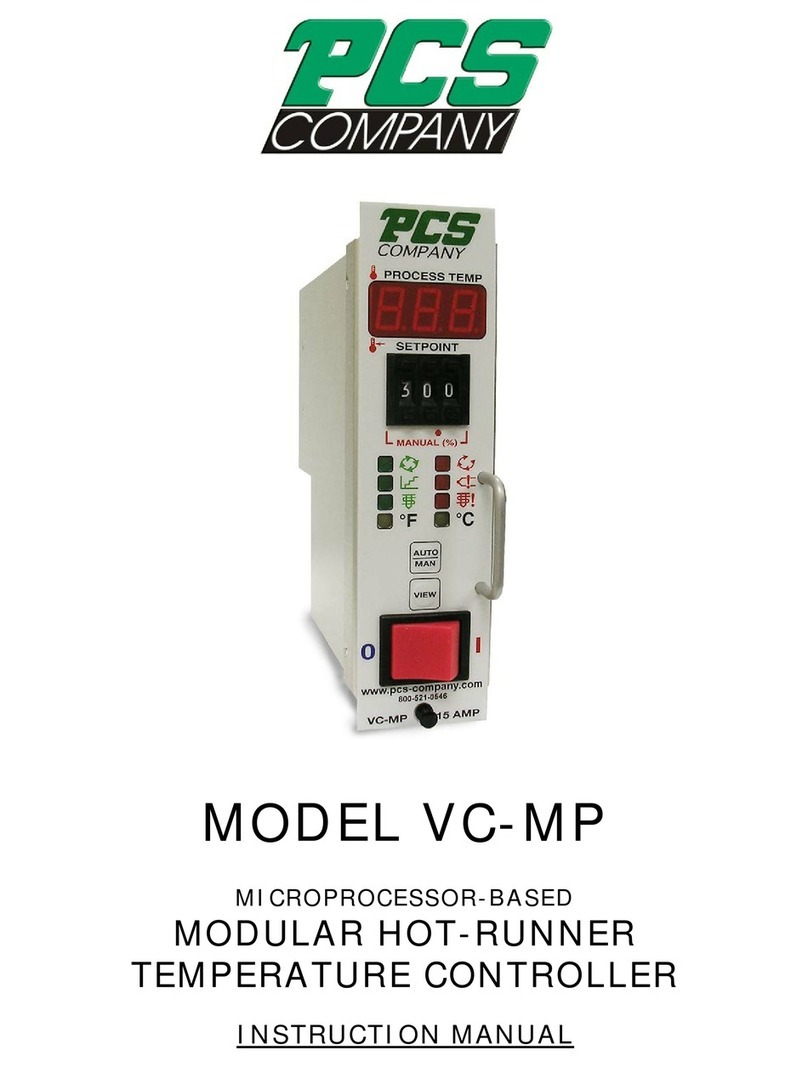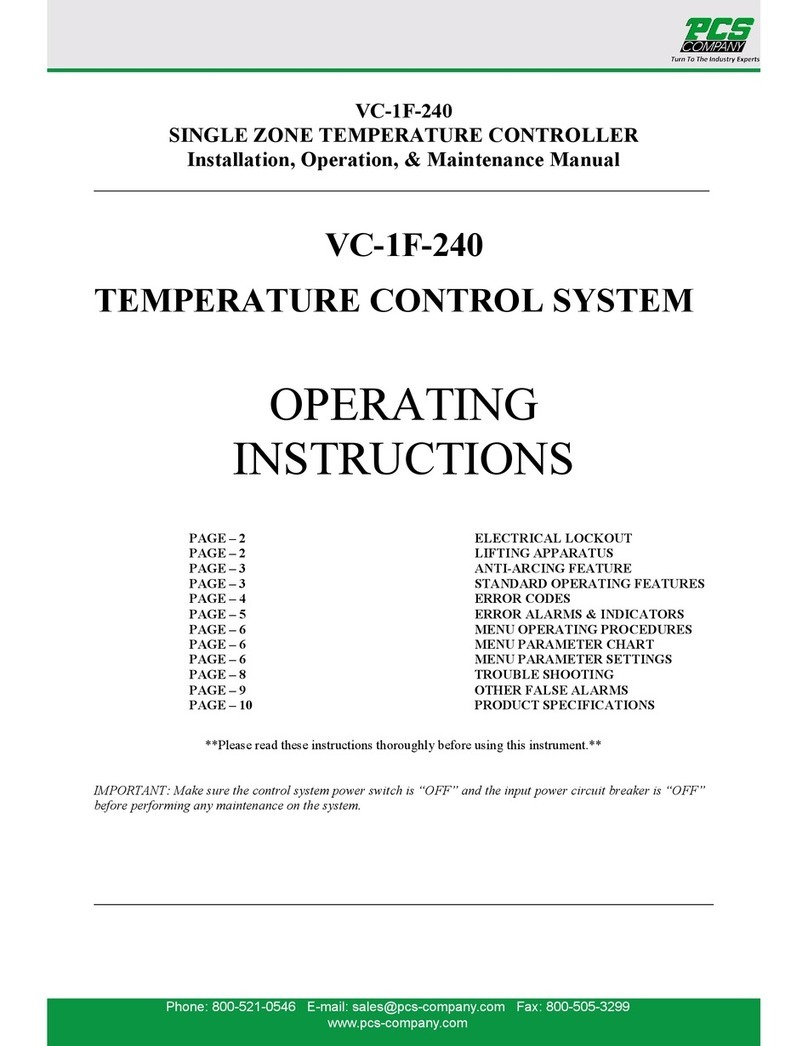
VC-M-1
Installation, Operation & Maintenance Manual
ERRORS & ALARMS INDICATOR DESCRIPTION:
OPEN THERMOCOUPLE PROTECTION:
In the event a thermocouple fails in the open condition after reaching set point temperature, the module will
automatically control temperature with stored APO (Average Power Output) information if the MENU feature “tCO”
is set to “APO”, otherwise power is disabled. This feature only operates at set point temperature.
REVERSED THERMOCOUPLE PROTECTION
The VC-M-1 will scrutinize actual voltage through the thermocouple. In the event a negative voltage is detected,
the “tCr” error code will be displayed, and power will not be applied to the heater.
SHORTED THERMOCOUPLE INDICATION:
In the event a thermocouple fails to detect a rise in temperature while power is being applied to the heater, the module
will activate an alarm, and the “tCS” error code will be displayed. The module activates “APO” if selected,
otherwise “OFF”.
OPEN TRIAC/OPEN HEATER:
The module will alert the operator in the event of an open triac or heater, by displaying a “toH” error message in the
upper window. This condition is detected if the heater fails to maintain or rise to set point temperature and there is
an absence of current flowing to the heater. Module will disable power to heater.
SHORTED TRIAC PROTECTION:
Within the circuitry of the μATC-20 module are relays which disable power to the heater in the event the main triac
is shorted. In a situation when power to the heater is detected when the temperature is well above the set point, the
module will disable power to the heater. A “tSH” error code will then be displayed in the upper window so damage
to the mold or heater can be averted.
HIGH CURRENT WARNING:
To help protect valuable molds and other related equipment, a safety device will alarm if a heater is drawing current
above its rated capacity. To set a current value, scroll through the MENU for the “HiC” feature, usingthe “up”
or “down” keys set a value just above the heaters maximum current draw. The module will trigger an alarm and
disable power to the heater if current exceeds the set value. Utilizing this feature can save time and expense by
calling attention to a problem before damage occurs. In MENU the range may be set between 1.0 and 16.0 amps.
GROUND FAULT SENSITIVITY:
The control module is equipped with a ground fault detection circuit. When the “SOFT START” cycle terminates,
the control module will check for current leakage to ground in the heater circuit. If leakage is detected in excess
of the value entered in “gFS” MENU parameter, the control module will alarm and “gFd” will be displayed in
the process temperature window. The ground fault sensitivity is factory set at 120mA. Sensitivity may be adjusted
or turned off in MENU option “gFS”. To disable ground fault, first set the option to “OFF” then turn the module
off and then back on. (range 60 to 180 mA) Power will be disabled to heater.
HIGH AND LOW TEMPERATURE ALARM:
The high and low temperature alarms have been factory set at +/- 30º F (16° C). If the zone temperature drops 30º
(16° C) below the set point or if the temperature exceeds 30º (16° C) above the set point, the alarm will activate,
and the “HIGH” or “LOW” LED will activate.
BLOWN FUSE INDICATION:
In the event that one or both of the module power fuses blow, the red LED’s labeled “F1” or “F2” will come on indicating
which fuse has blown. CAUTION: only the proper fuses must be used in order to prevent module damage and void
the warranty. Fuses are available from PCS.
Phone: 800-521-0546 E-mail: sales@pcs-company.com Fax: 800-505-3299
www.pcs-company.com 5






























